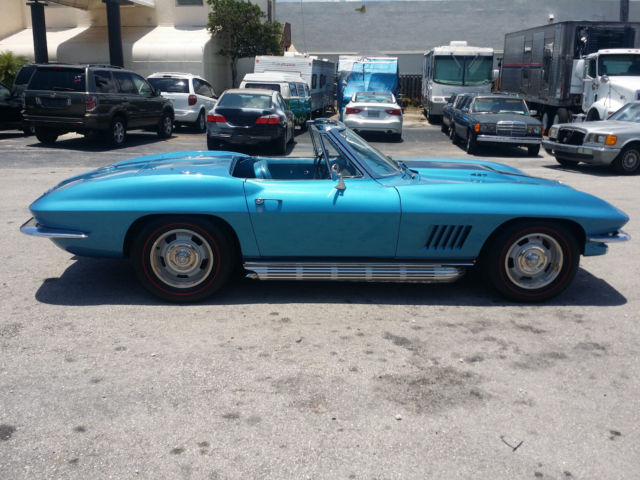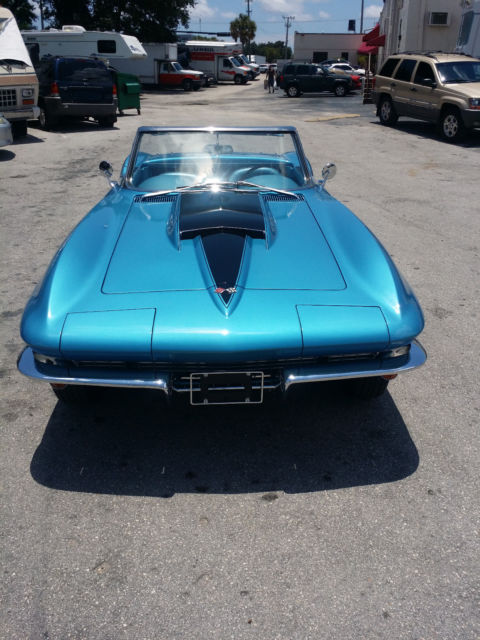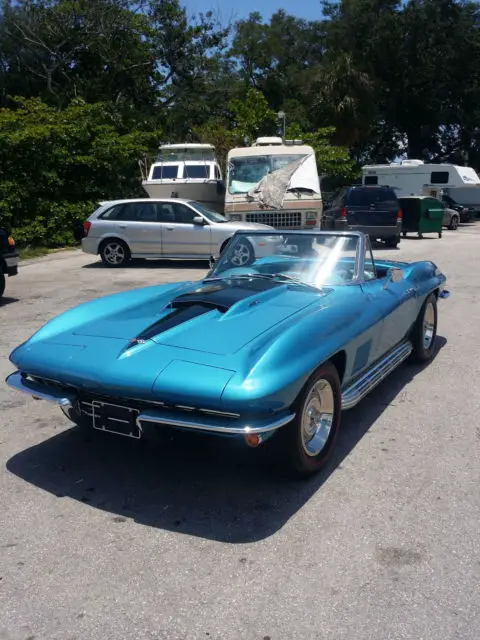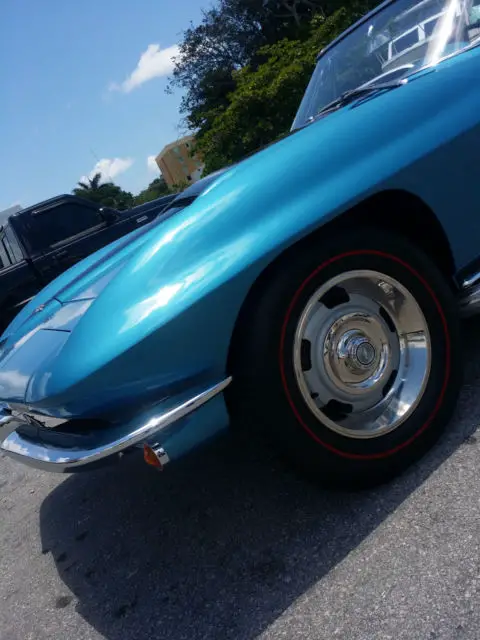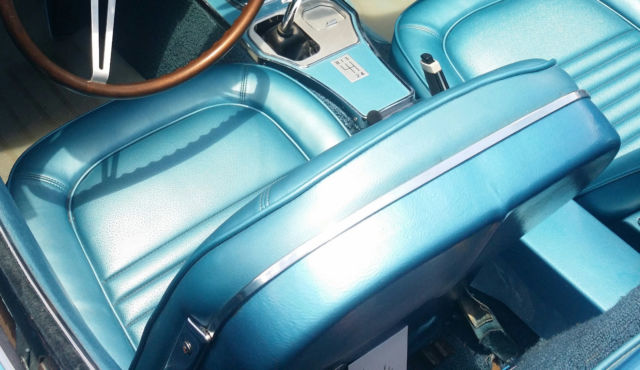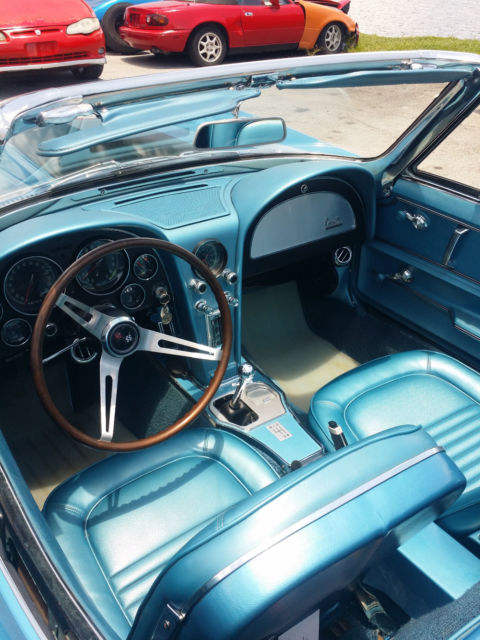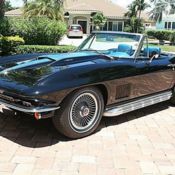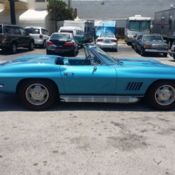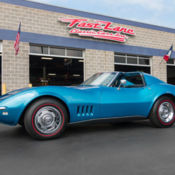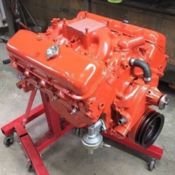1967 Chevrolet Corvette Convertible Roadster L71 427/435hp Matching Numbers
| Condition: | Used |
| Make: | Chevrolet |
| Model: | Corvette |
| SubModel: | 427/435 |
| Type: | Convertible |
| Trim: | Convertible Roadster |
| Year: | 1967 |
| Mileage: | 98,762 |
| VIN: | 194677S118752 |
| Color: | Blue |
| Engine: | L-71 |
| Cylinders: | 8 |
| Transmission: | Manual |
| Drive type: | RWD |
| Interior color: | Blue |
| Vehicle Title: | Clear |
| Item location: | Dania, Florida, United States |
| Extras |
|
Air Conditioning Convertible |
| Listed by | Private seller |
Description of 1967 Chevrolet Corvette 427/435 |
||||||||||||||||||
|
Welcome to our auction! We are selling a 1967 Chevrolet Corvette Stingray Convertible Roadster, with a 427/435hp L71 engine. This is a matching numbers car, with aftermarket A/C and larger radiator. The original parts are in a box and come with the car. This Corvette was sold at Barrett Jackson, Scottsdale 2004 for; $148,500 No reserve.
Barrett Jackson link below; http://www.barrett-jackson.com/Events/Event/Details/1967-CHEVROLET-CORVETTE-427/435-CONVERTIBLE-24111 Note: You may call 305-797-9000 with any questions you may have. ---------------------------------------------------------------------------- For more pictures please click the following link below, or copy and paste in your browser's URL bar. http://s558.photobucket.com/user/motorcarscom/library/1967%20Corvette?sort=3&page=1 Seller Notes: “There are three small areas on the hood that need attention. (See Pics in Photo Bucket Link above). Two are located on the hood scoop where it meets the hood on each side. One is near the right front of the hood. A/C and a larger radiator have been installed aftermarket, and the original parts are in a box and come with the car.” You may call 305-797-9000 with any questions you may have. Thanks!--------------------------------------------------------------------------- Here's some history of Chevrolet's 1967 Corvette below; In the Corvette world, three models have dominated the collector market: the 1957 with fuel injection, the 1963 Split-Window Sting Ray with fuel injection, and the 1967 Sting Ray with the top horsepower 427 engines. Other years may have offered better performance, superior features, or better styling, but this threesome tops the value list. Demand for the 1967 427 Sting Ray has resulted in this model hitting the sweet spot of performance and style. That’s ironic, since this Corvette almost wasn’t built. The curvacious Mako Shark-inspired Sting Ray introduced in 1968 was supposed to be the 1967 model. That car was delayed a year, mainly over indecision on the coupe’s roof design. The rush to bring a 1967 Corvette to market was eased by the fact that both the ’67 and the ’68 rode on the same chassis. The new series of powertrain options readied for 1967 could sit under either body, so the majority of the engineering was done. The base 300-hp 327 carried over from the ’66 car. So did the L79 350-hp small-block option. But the big news were the five 427 monsters on the option list. The 390-hp L36, with its mild cam, single Holley 4-barrel carb and lower compression, was a carryover from 1966, and was designed for easy cruising. Next came the new 400-hp L68, essentially an L36 with the addition of the new 3x2 barrel tri-carb setup. Like the L36, the L68 could be had with automatic transmission and air conditioning. But the press fell all over themselves about the new L71 435-hp engine. This replaced the 1966 L72 427 as the top street engine in the lineup. High compression, wild cam, and the tri-carb ensured legendary performance. GM’s concern for reliability meant that automatic transmissions and air conditioning were not available on the L71. At $437.10, the L71 package was expensive, yet 3,754 (16% of Corvette production that year) were ordered. The L71 was an evolution of the L72, which produced a claimed 425 horsepower (SAE gross). The L71 replaced the single Holley 4-barrel of the L72 with three Holley 2-barrel carburetors, similar to what Pontiac had offered since the early 1960s. With the tri-carb arrangement, only the center carburetor was functional during normal driving. But stomp the accelerator and the vacuum-activated outer carbs delivered a torrent of fuel to the hungry big block. Chevrolet rated the L71 at 435 hp, but many thought the rating of the L72 was conservative (in fact there is data to suggest the L72 the faster of the two). What the L71’s tri-carbs did deliver was better fuel economy in daily driving, since it was essentially a 2-barrel engine until the need for speed hit. Since the only automatic transmission available to Chevrolet in ’67 was the aging 2-speed Powerglide, the L71 was only available with the superb M21 Muncie 4-speed manual, making this an engine for serious drivers. Two other little-known options were available. RPO L89 added aluminum heads to the L71. No increase in horsepower, but a reduction of 200 lbs over the front wheels gave the L89 about the same weight bias as the 327 engine. Adding $368.68 to the L71 drove the cost of the L89 Corvette over the $5,000 mark, but it was the ultimate in street performance that year. Just 16 were built in 1967, making the L89 the rarest option. The other rarity was the L88. Generating over 500 hp, the L88 engine was hand-built at the Tonawanda, New York, plant to blueprinted racing standards. Many of those cars were purchased for street use, but the L88 was intended for racing only. With 12.5:1 compression, a wild high-lift cam, and a huge single Holley 4-barrel, the L88 inhaled 103 octane race fuel with abandon, and bucked and snorted at anything less than serious rpm. But at the 1967 24 Hours of Le Mans, Dick Guldstrand topped 171.5 mph on the three-mile Mulsanne Straight with a near-stock L88, and led the GT class until the stock connecting rods failed. Since the Chevrolet Studio was busy with the next generation car, styling changes to the ’67 were minimal. A new hood for the 427 cars was developed, with a “power bulge” that anticipated the ’68 design. Federal mandate eliminated knockoff hubs, so the factory alloy wheels were modified with a large hex nut. Other trim was cleaned up, and new side vents added to the front fenders, an easy task with the Corvette’s fiberglass construction. In the opinion of many, this was the second generation’s best year for style. Anticipation of the 1968 Corvette may have kept sales of the ’67 down. Only 22,940 were built (14,436 convertibles, 8,504 coupes), versus 27,720 in 1966 and 28,566 in 1968. But in the collector market, the L71 or greater ’67s have excelled. During the heady days of the Corvette collector “explosion” in the late ’80s, these were some of the first to cross the $100,000 milestone. ------------------------------------------------------------------------- For more pictures please click the following link below, or copy and paste in your browser's URL bar. http://s558.photobucket.com/user/motorcarscom/library/1967%20Corvette?sort=3&page=1 Seller Notes: “There are three small areas on the hood that need attention. (See Pics in Photo Bucket Link above). Two are located on the hood scoop where it meets the hood on each side. One is near the right front of the hood. A/C and a larger radiator have been installed aftermarket, and the original parts are in a box and come with the car.” |
 Home
Home Contact us
Contact us NEWEST CARS
NEWEST CARS SELL YOUR CAR
SELL YOUR CAR FAQ
FAQ
